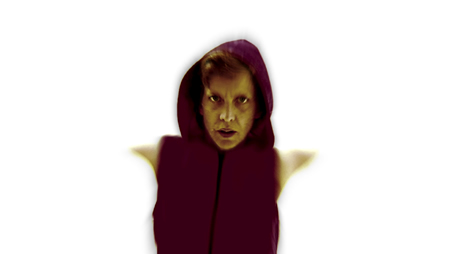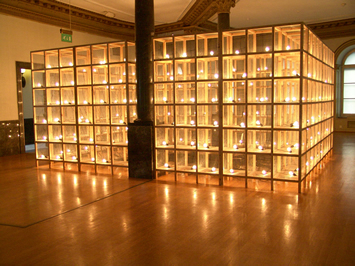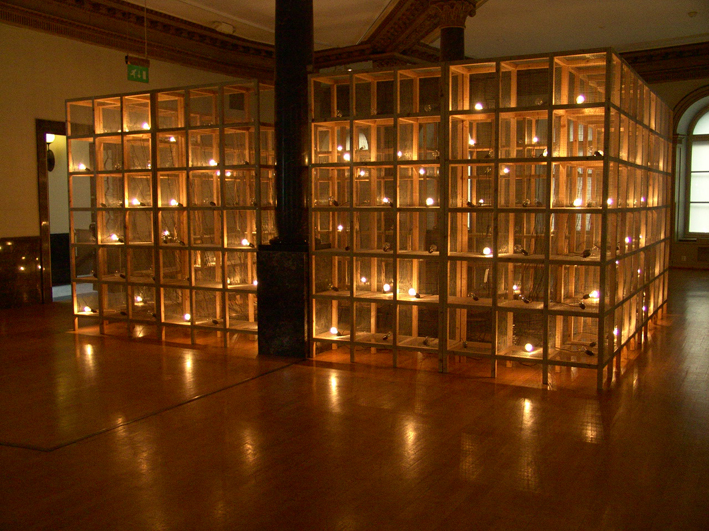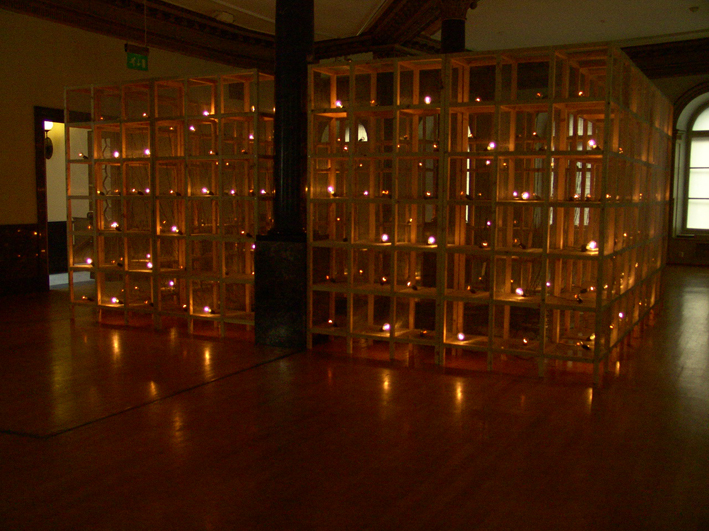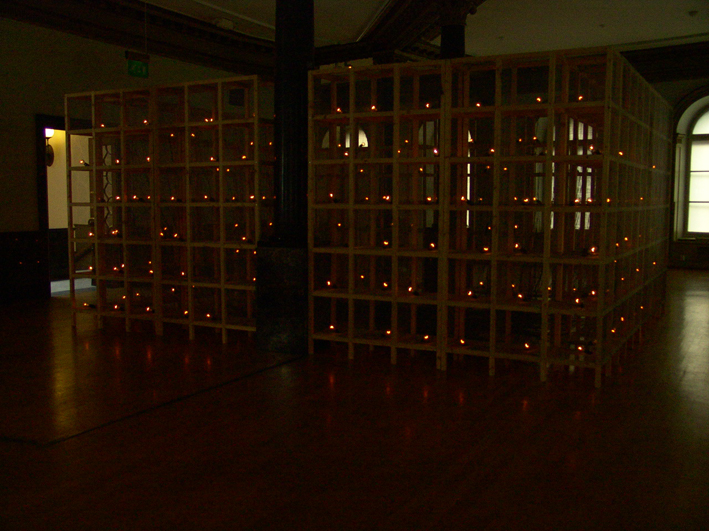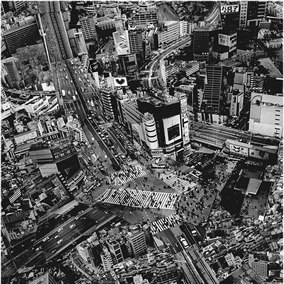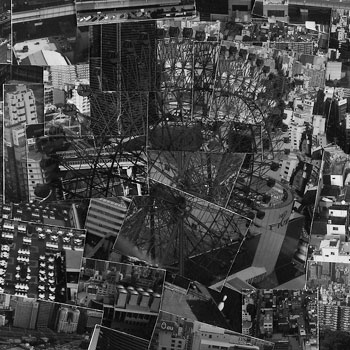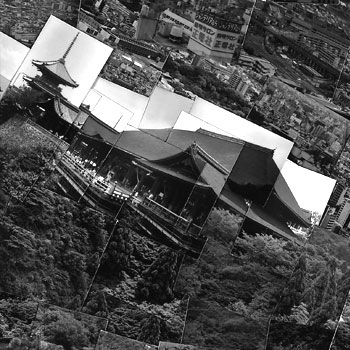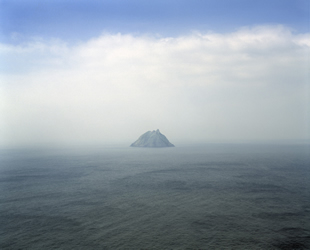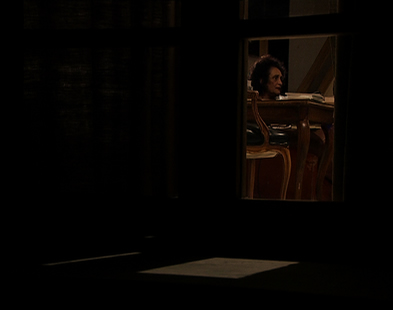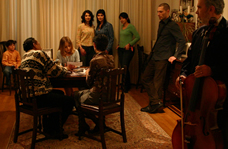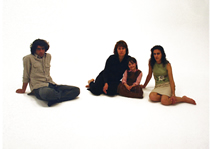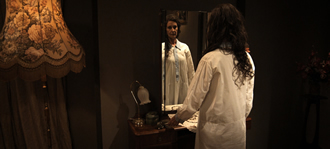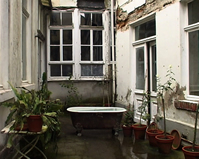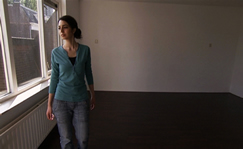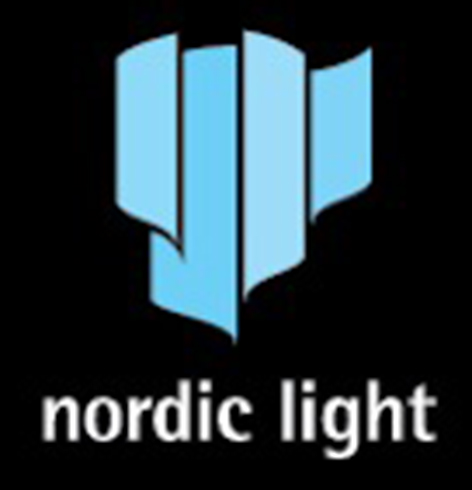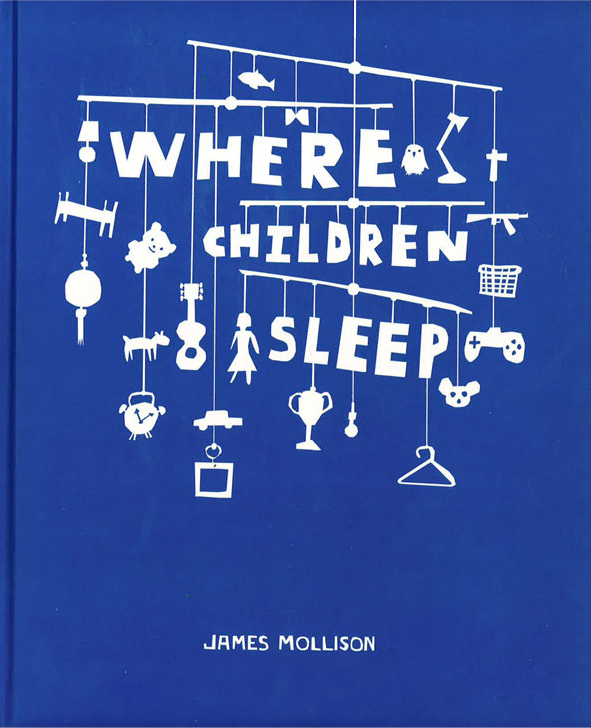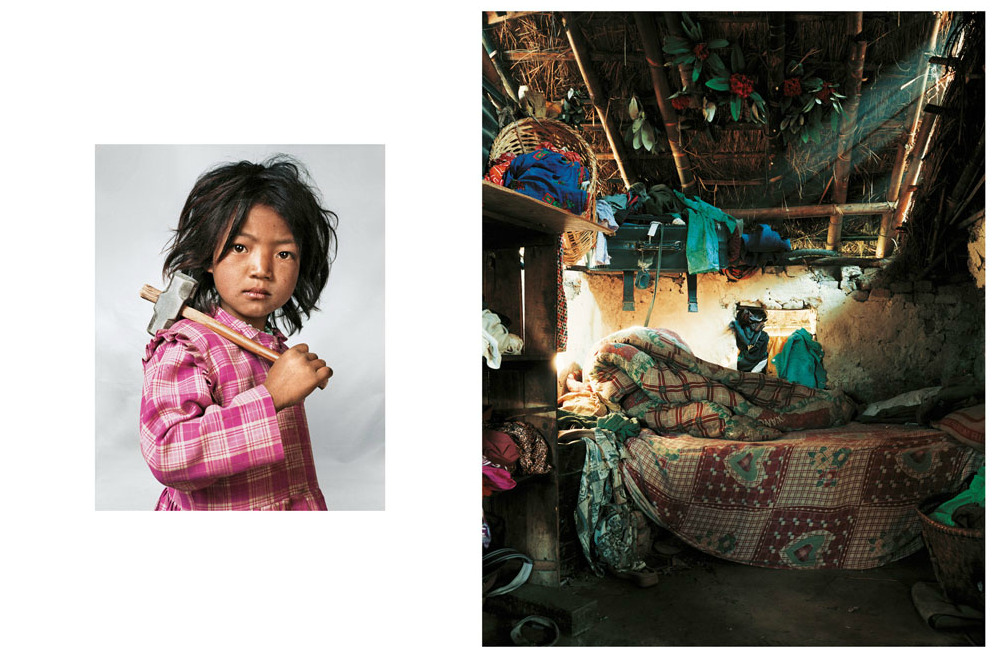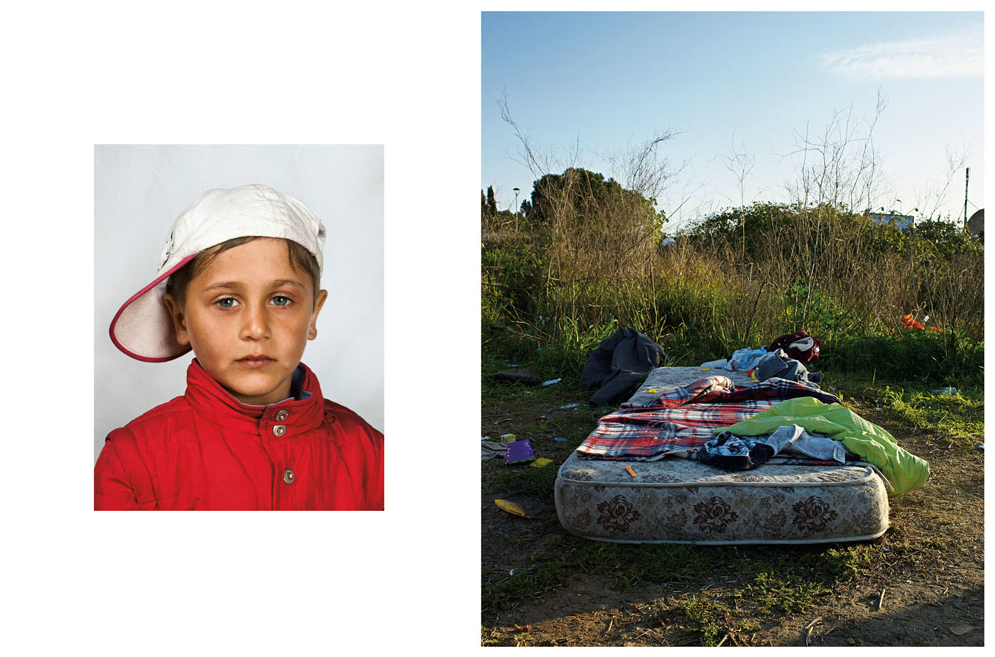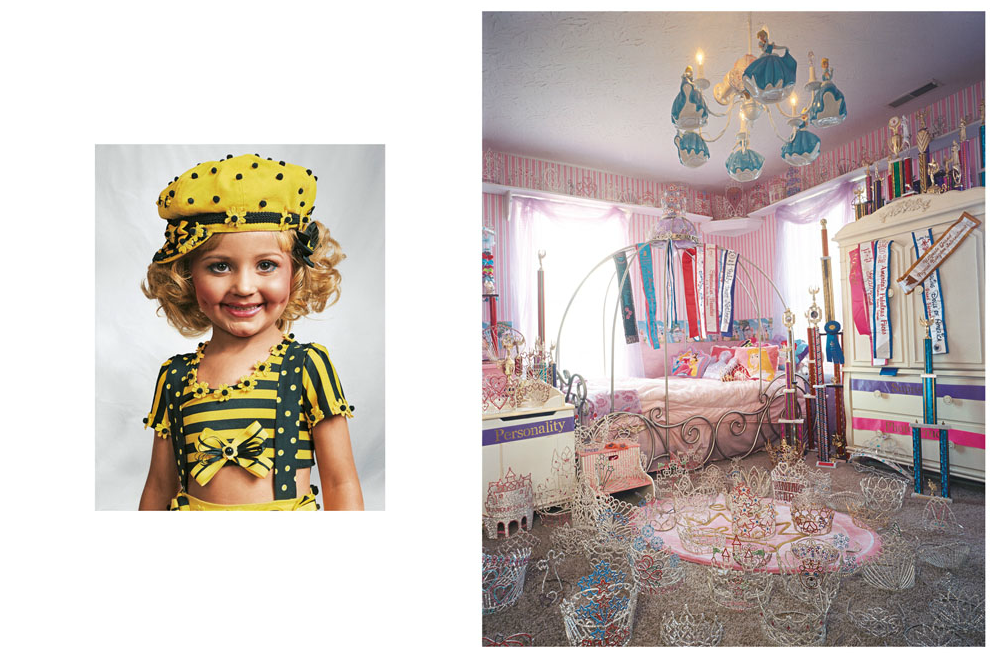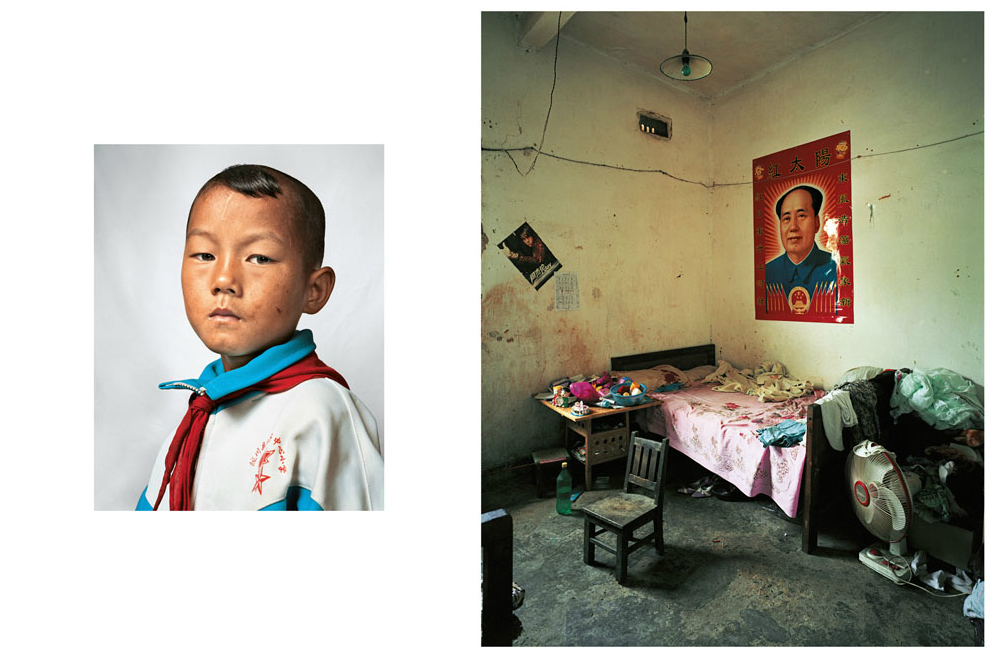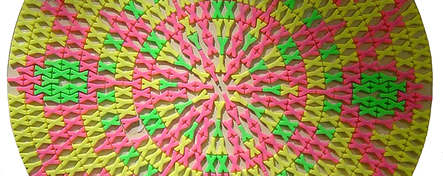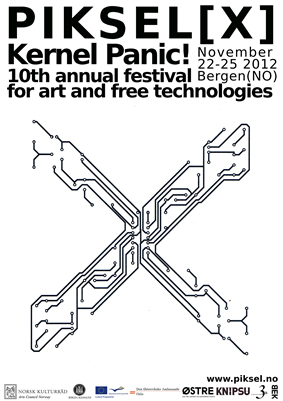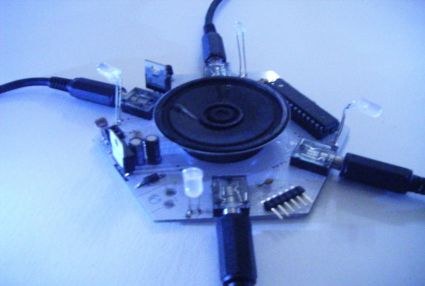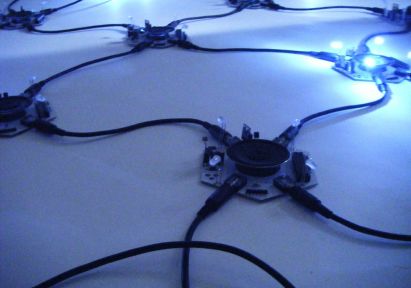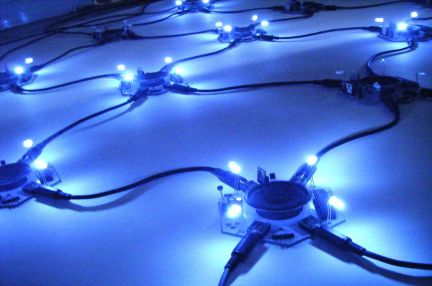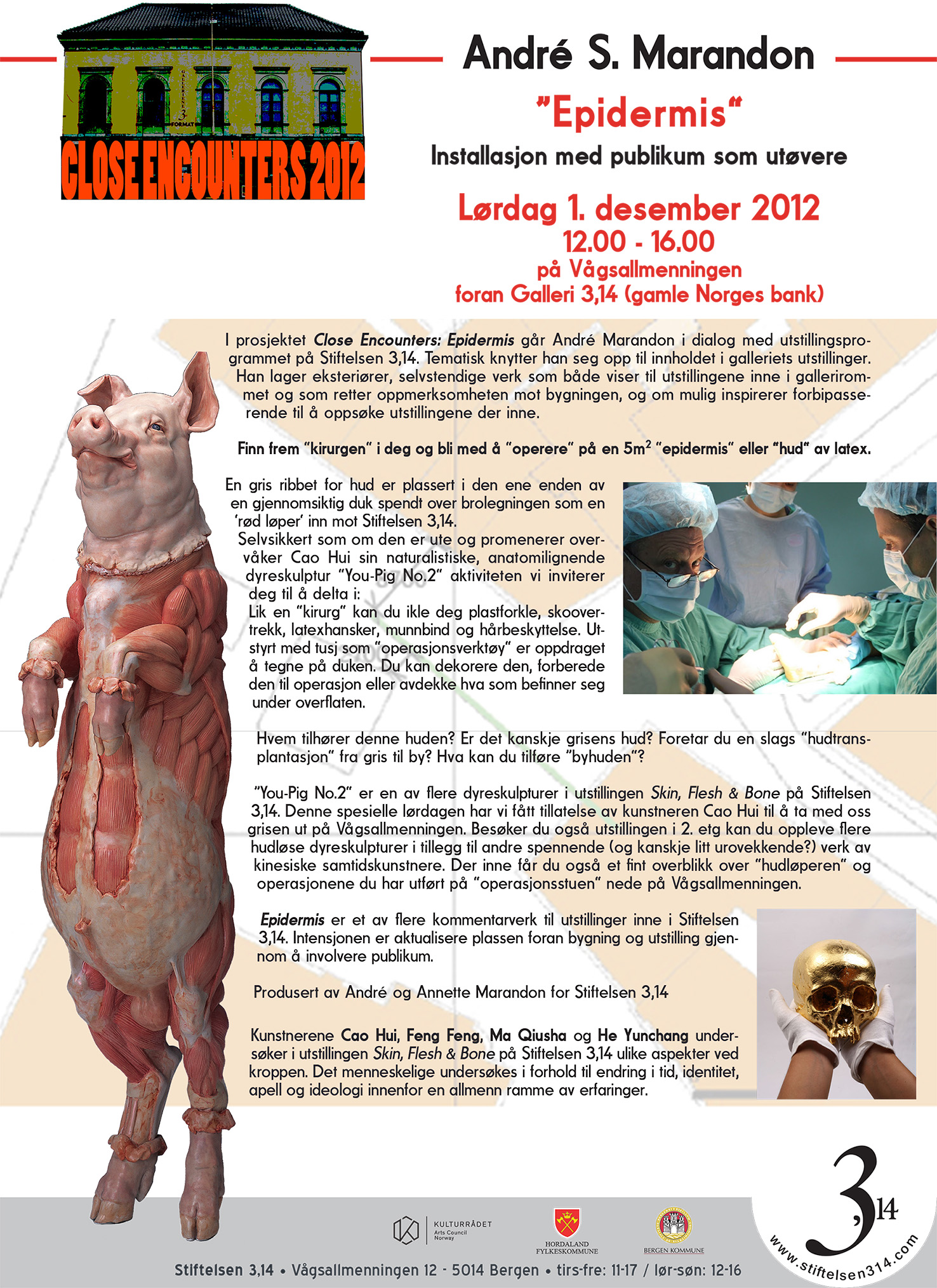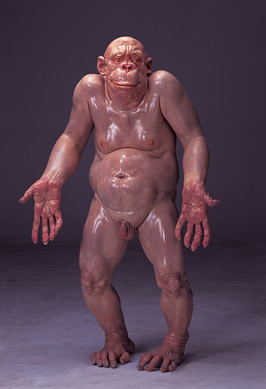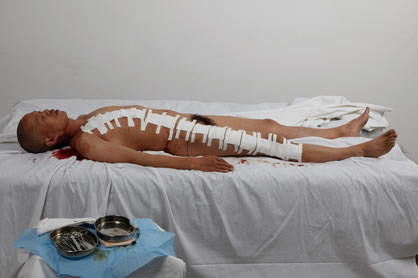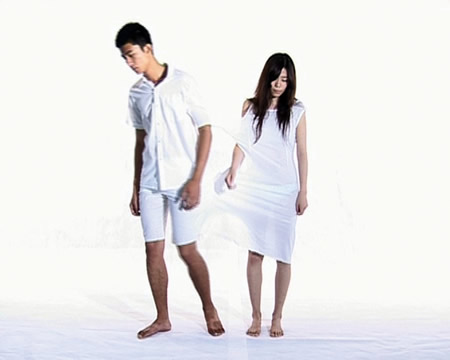3,14 proudly presents the installation Current Disturbance by Mona Hatoum. Hatoum is internationally recognized by her many works which juxtapose contradictions. Her art is characterized by the tension and uncertainty created by opposition. This work is being shown at 3,14 after its presentation at the Guggenheim Museum in Bilbao and is included in The D.Daskalopoulos Collection, one of the world’s most significant private collections of contemporary art.
The visual expression of Current Disturbance is minimalistic. The narrative, however, allows ample space for multiple stories. The sense of political or cultural oppression in Hatoum’s works is universal. The artist intentionally wants her audience to question what they see and to leave the exhibition with more questions than answers. Hatoum challenges our perspective of the world as we know it. Each of the many wire cages of Current Disturbance contains a single light-bulb programmed to glow or be dimmed in intervals – each light-source individually programmed. The electric sound of the light-bulbs is recorded live and amplified through a speaker system, thereby creating an auditory as well as visual effect for the spectator. The intensity of the light source affects the strength of sound. The intervals and intensity of light and sound create a sense of discomfort and unease, and a feeling among the audience of impending doom. Hatoum’s poetic and political oeuvre is created in unconventional and diverse media. She makes installations which often place the observer in disquieting situations. Her surprising act of imbuing everyday objects with an air of impending threat and danger transforms the objects to mirror a dangerous domestic situation. Hatoum expresses the dichotomies and contradictions of objects and situations and/or emphasizes a sense of loss of stability. Simultaneously the objects may create a sense of incarceration by domesticity. With numerous associations the artist refuses to point at specific incidents, places or cultures. Hatoum does not point a finger at anything, and she never defines the source of unrest or conflict.
Mona Hatoum is a London based artist of Palestinian descent, who grew up in exile in Lebanon during the Arab-Israeli conflict. She was born in Beirut in Lebanon, but was travelling in England in 1975 when Lebanon’s 20 year civil war began. As a result of the war she was unable to return to Lebanon, and forced to exile. Her artistic oeuvre is, in many respects, autobiographical. Although her works are influenced by a personal experience of exile, they are nonetheless intended to be open to other interpretations and readings.
Mona Hatoum’s work have been shown at many prestigious biennials and at significant museums, such as; the Venice Biennale, Sao Paulo Biennale, Biennale of Sydney, Havana Biennale, Istanbul Biennale, Kwangju Biennale, South Korea, Guggenheim Museum, Bilbao, Centre Pompidou, Paris, Museum of Contemporary Art, Chicago, The New Museum of Contemporary Art, New York, Castello di Rivoli, Turin, Tate Britain, London, Hamburger Kunsthalle, Kunstmuseum Bonn, Magasin 3, Stockholm and Museum of Contemporary Art, Sydney, Whitechapel Gallery, London, White Qube, London, De Appel, Amsterdam, Museum of Modern Art, Oxford and the Scottish National Gallery of Modern Art, Edinburgh, as well as at Kunsthalle Basel.
Mona Hatoum ”Current Disturbance”, 1996. Wood, wire mesh, light bulbs, computerized dimmer switch, amplifier, and four speakers, edition 1/2.
The D.Daskalopoulos Collection. |




